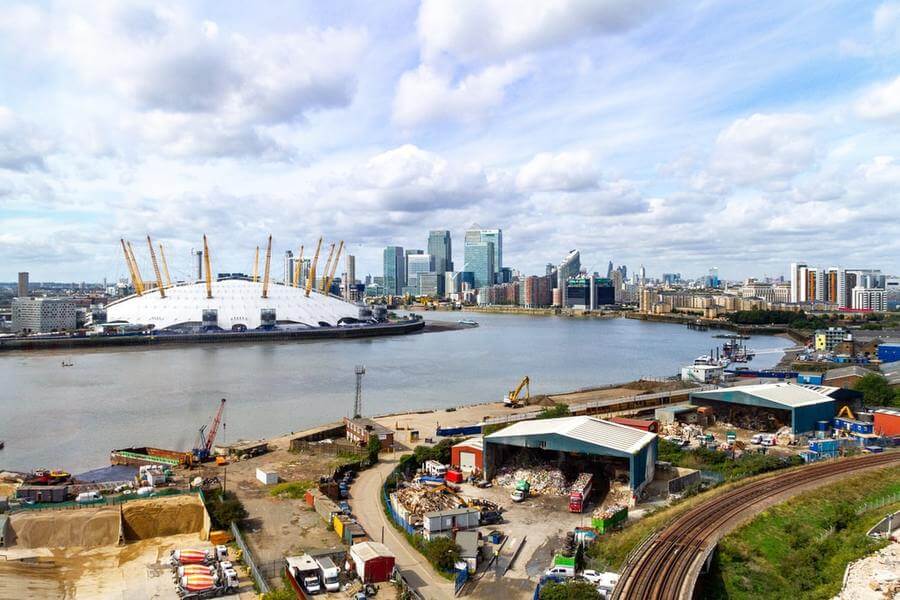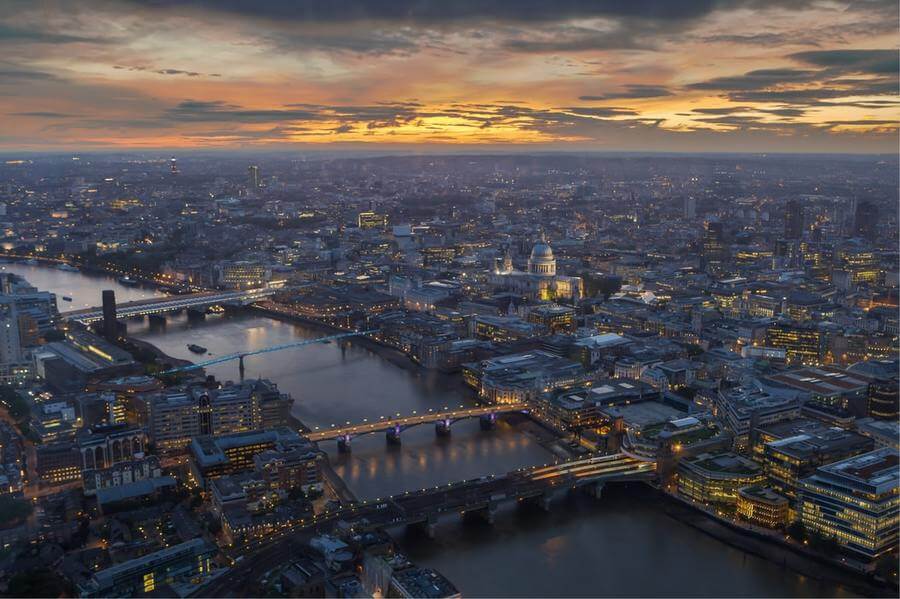A History Of Spice In London
Understanding Spices
Your cart is empty.
SUBTOTAL
£0.00

Understanding Spices
London. What hasn’t been said about this capital of capitals? It is one of the greatest cities on earth and, at one point, was the very centre of it. As it sat at the heart of The British Empire – the largest empire the world has ever seen – it thrived on everything from the brutal blood and chains of war and slavery, to the dazzling feats of engineering and science.
To study London is to study the human race – much like putting society through the ages under the microscope. From its founding as a Roman outpost on the River Thames to the modern multicultural metropolis, this place is jam-packed full of history and stories regarding aspects of every part of life. That includes spices.
Naturally, being at the heart of the British Empire meant that London played a key role in the spice trade. Here, we take a closer look at the history of spice in London.
Integral to any good, thorough history of the spice trade is the East India Trading Company and by association, London too.
Formed in 1600, the company was given a royal monopoly over all trade east of The Cape of Good Hope (see the southern tip of Africa). In other words, all of India and the far-east was fair game. Although to the detriment of vast swathes of India and South East Asia, for Britain, this one really paid off.
At one point, this company is said to have controlled nearly half the world’s trade and a fifth of the world’s population. Indeed, it pretty much single-handedly paved the way for Britain’s dominant empire.
Over the ensuing centuries, The East India Trading Company seized control of large parts of the Indian sub-continent and colonised large parts of South East Asia, including Hong Kong after the first opium war. To give you an idea of just how large and powerful this company grew, it commanded an army of 260,000 – twice the size of the official British Army! In many ways, the company was the British Empire itself, conquering, dividing and ruling wherever it went.

And what was this all in the name of? The answer is Cotton, silk, indigo dye, salt, saltpetre, tea, opium and of course spices. The company existed to make money and therefore, naturally, spices were a key part of their trade.
As discussed previously in other articles spices were small, light, non-perishable and most importantly, cheap to buy at source. Even the smallest of volumes transported back to Europe could then be sold at huge profit margins. Spices were the name of the game. Clove, ginger, turmeric, nutmeg, frankincense, black pepper, cinnamon, saffron and more, all sailed under the flag of the East India Trading Company.
As it grew and monopolised the trade, the East India Trading Company gave birth to many of the world’s great cities – Bombay, Madras, Calcutta, Singapore and Hong Kong. But above all, it laid the solid foundations on which London really thrived.
In London’s east, not far from the Olympic Park, you’ll find the docks where these ships brought their treasures into the safe, warm and welcoming open arms of the British Empire. At any one time, the East India Docks could offer a safe haven to 250 East Indiamen (the name given to trading ships sailing under the East India Trading Company Flag), each of them up to 1000 tons.

This commotion and flow of trade spawned local industry with spice merchants and pepper grinders all setting up around in the area in order to process the incoming goods.
Sadly, during World War Two, the docks were badly damaged and in 1967 they were the first of London’s docks to officially close. However, there are still plenty of relics and pointers that nod toward this fascinating era of history.

Around the site of the East India Dock you will find that all the street names pay homage. Clove Crescent, Saffron Avenue, Nutmeg Lane, Rosemary Drive, Coriander Avenue, Oregano Drive – they’re all here. In typical British fashion, there is of course a pub too. You’ll find the ‘East India Arms’ comfortably tucked in between large offices and skyscrapers on Fenchurch Street, in the centre of the city.
Not far from here, ‘East India House’ could be found on Leadenhall Street. This was the company headquarters. Note the word ‘could’. Today, you will find little trace of it. The building was demolished to make way for the Lloyds of London building and a strange ironic twist. This part of London is the financial centre of the world and that is in large part thanks to the company and the Empire it facilitated.
With the flow of the physical goods, the city had become a hub of global trade. Many businesses set up around this hub, including insurance, currency trading and finance. This is why these skyscrapers – huge modern monoliths and statues, hailing the supreme reign of capitalism – stand here. Although there is no sign of the physical company headquarters, the world it built is all around us.


As referenced in our previous article about the history of spice in Liverpool, there are plenty of other historic buildings to be found in London. On the Thames, in places such as Butler’s Wharf, you could find whole warehouses dedicated to storing spice. The area became known as the ‘larder of London’. To this day, you can still see the overhead gantries over Shad Thames Street which connected the warehouses. Some say there is even the lingering smell of the wares once stored there.
In Devonshire Square meanwhile, you can find old East India Trading Company warehouses. The forbidding fortress-like walls and the fire-proof construction afforded excellent protection for the goods placed inside. There are records of ostrich feathers, chinaware, oriental carpets, cigars, tortoiseshell, silks, mother of pearl, clocks, watches, cameras, drugs, spices, musical instruments, perfumes, tea and other prized artefacts all stored here!
Fascinatingly, within the buildings today, you will now find a few Indian restaurants such as the aptly named ‘Cinnamon Kitchen’ which offers ‘evolved, modern Indian cuisine. Its dedicated bar next door – ‘Anise’ – also serves platters. The smell of spices still fills the courtyards to this day, taking you right back in time.
Just naturally, with the flow of trade and goods came the flow of people. People from different cultures and races entering the melting pot of London. As a result, like any other world city, it is now full of great places to eat.
Amongst the spiciest restaurants in the capital is ‘The Cinnamon Club’. In 2001, chef Vivek Singh set up this ‘institution of Indian fine dining’ in the historic Grade II listed former Westminster Library. One of the many choices on the menu is the notorious ‘Bombay Burner’ – a lamb mince curry that has been touted as the hottest curry in the world. There must be something to it as you have to inform the restaurant that you want it with 48 hours in advance. This is so they can source all of the chillies. Oh – you also need to sign a legal disclaimer before eating it!
If you’re looking for both spicey meal and a view then you’ll be hard pressed to find anything better than ‘Hutong’. Situated on the 33rd floor of The Shard, this Sichuan restaurant offers stunning views of London and some of the hottest authentic dishes from the region. Lots of awards and plenty of Sichuan peppers to be found here.

If fine dining isn’t quite your thing or your wallet doesn’t fancy the higher prices of such fine establishments, London has plenty to offer at the other end of the spectrum too.
It wasn’t just around the East India Docks that the spice merchants and pepper grinders setup. This city is home to some of the best food markets in the world – a real treat for any visiting foodie. My personal favourite has to be Borough Market. It’s perhaps the most well known and with good reason.

Here, you will find absolutely everything from the raw, natural ingredients to ready-made dishes, their broth bubbling and steaming from the stalls, enticing you in. Laid out in beautiful, stunning colour are an array of vegetables and fruits together with chillies, garlic, cashews, almonds, bay leaves and so much more. Whatever you need for your homemade dish, it’s here, fresh and ready.
Take Spice Mountain for example – one of the best stalls in the market. Working directly with the producer wherever possible, owner Magali Russie sources her products from plantations in Goa and Kerala, farms in Mauritius and producers in Spain and Kashmir.
With more than 100 herbs, spices and blends, her stall is home to one of the greatest collections imaginable. There are all the familiars and every days, but also real rarities such as Australian wattleseed – the toasted seeds of the acacia tree used in traditional Aboriginal cooking.
Meanwhile, Gujarati Rasoi is serving up beautifully hot local Indian dishes just around the corner. The owners, Urvesh Parvais and his mother Lalita, work to recipes that have been passed down over many generations in Gujarat, India. Lalita knows the recipes off by heart, including street food dishes such as Padi Chaat and Pau Bahji that’ll make your mouth water. They use only fresh ingredients and whole spices to create superior quality cooking sauces, chutneys and chai spices, imbued with the genuine taste of traditional home cooking. Hungry yet?
And this is just one of many, many markets dotted across the capital. London is, indeed, intrinsically connected to spice both throughout history and today.

Understanding Spices
Spices have long been integral to the UK's culinary landscape, adding depth, flavours, and richness to a myriad of dishes. From the pungent aroma of cumin in Indian curries to...
Read MoreUnderstanding Spices
Confetti is an essential part of any wedding day. Not only is it a wonderful way to greet a newlywed couple, but it also provides some beautiful photo opportunities. The...
Read MoreSeasonal Ideas
It’s no secret that any handmade gift will always be more special than a store-bought one. Homemade food gifts are especially wonderful, a labour of love that shows someone you...
Read MoreHealth and Wellbeing
It’s no secret that winter’s cold and gloomy weather makes us crave indulgent dishes like fondue and baked goods like sticky toffee pudding and apple crumble. While Christmas is the...
Read More